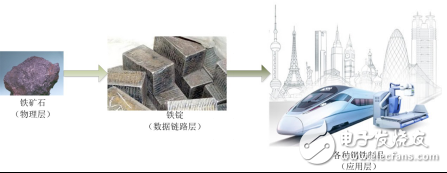OSI is an acronym for Open System InterconnecTIon, meaning open system interconnection. The International Organization for Standardization (ISO) has developed an OSI model that defines the standards for different computer interconnections and is the basic framework for designing and describing computer network communications. The OSI model divides the work of network communication into seven layers, namely physical layer, data link layer, network layer, transport layer, session layer, presentation layer and application layer. From the perspective of OSI's 7-layer network model, the CAN (Controller Area Network) fieldbus only defines the first layer (physical layer, see ISO11898-2 standard), and layer 2 (data link layer, see ISO11898- 1 standard); In the actual design, the two layers are completely implemented by hardware, the designer does not need to develop related software (Software) or firmware (Firmware) for this purpose, as long as you know how to call the relevant interfaces and registers, you can complete CAN control. As shown in Figure 1. Figure 1 CAN controller structure However, CAN does not specify an application layer. That is, there is no logic related to the actual application, such as digital input and output, analog input and output. So it is incomplete for the application itself. This is like iron ore (physical layer) smelting into iron ingots (data link layer), and then for specific applications, re-processing into cars, ships, steel, tanks, steel structures and so on. as shown in picture 2. Figure 2 from the physical layer to the application layer Therefore, basic CAN applications in each industry require a high-level protocol to define the use of 11/29-bit identifiers and 8-byte data in CAN messages. However, in the industrial automation application of CAN bus, due to the increasing demand for interconnection and interconnection of devices, an open, standardized high-level protocol is required: this protocol supports the interoperability and interchangeability of various CAN vendors' devices. It can realize standard and unified system communication mode in CAN network, provide device function description mode, and perform network management function. These include: ApplicaTIon layer: Provides a set of useful services and protocols for every valid device in the network. Communication description (CommunicaTIon profile): Provides the meaning of configuration equipment, communication data, and defines the data communication method. Device proflile: Adds compliance behavior to devices (classes). Guangzhou Yunge Tianhong Electronic Technology Co., Ltd , https://www.e-cigarettesfactory.com

June 05, 2023